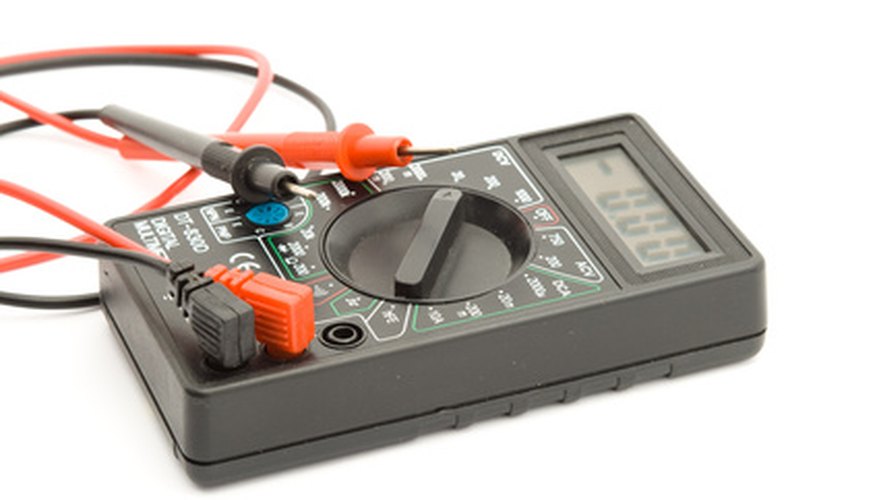
The purpose of the rectifier on an outboard motor is to force the current to flow in one direction only, using diodes, which are like one-way electrical valves. The whole purpose behind testing the rectifier is to discover whether there is continuity in the circuit and whether current can flow in one direction or both directions. If the rectifier is working as it should, testing should show continuity in one direction only.
Items you will need
Open-end wrenches
Digital multimeter
Step 1
Disconnect both battery cables from the battery before beginning the tests. Use a 5/16-inch open-end wrench to remove the nut from the negative battery post and the negative cable. Use a 3/8-inch open-end wrench to remove the nut from the positive battery post and the positive cable.
Step 2
Connect the positive lead of the digital multimeter to the rectifier ground and alternately touch terminals A and C with the negative lead, noting the results. The meter should show continuity between the terminals and the ground. Move the negative lead to ground and the positive lead to terminal A and then terminal C. The meter should show continuity with both terminals, but no continuity to the ground. If the meter shows continuity when you switch the negative lead to the rectifier ground, or if both tests show continuity or no continuity, replace the rectifier.
Step 3
Connect the negative multimeter lead to terminal B and alternately touch terminals A and C with the positive multimeter lead. If the meter does not show continuity, replace the rectifier.
Step 4
Connect the positive multimeter lead to terminal B and alternately touch terminals A and C with the negative lead. If the meter shows continuity, replace the rectifier.
References
- "Johnson Repair Manual - 2.5 to 250 HP Models, 2002-2007"; Seloc Marine; 2007
Writer Bio
Will Charpentier is a writer who specializes in boating and maritime subjects. A retired ship captain, Charpentier holds a doctorate in applied ocean science and engineering. He is also a certified marine technician and the author of a popular text on writing local history.


